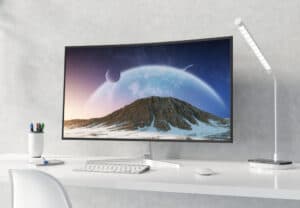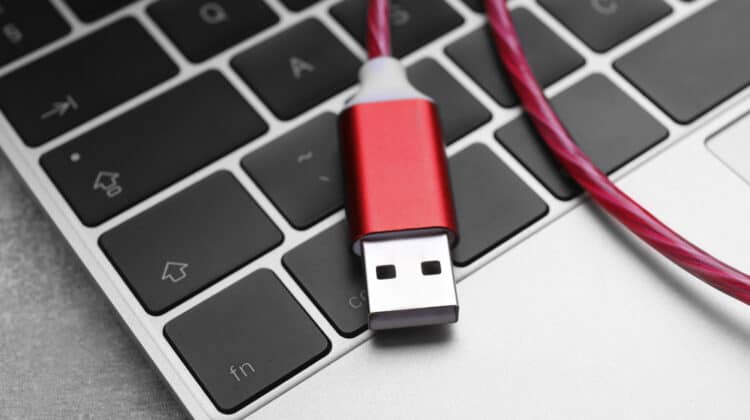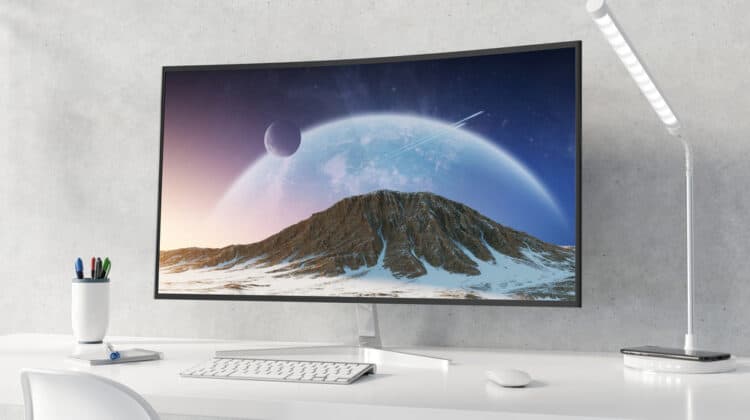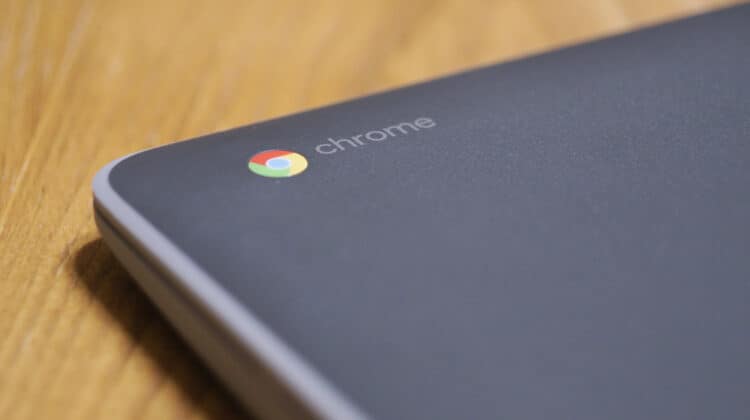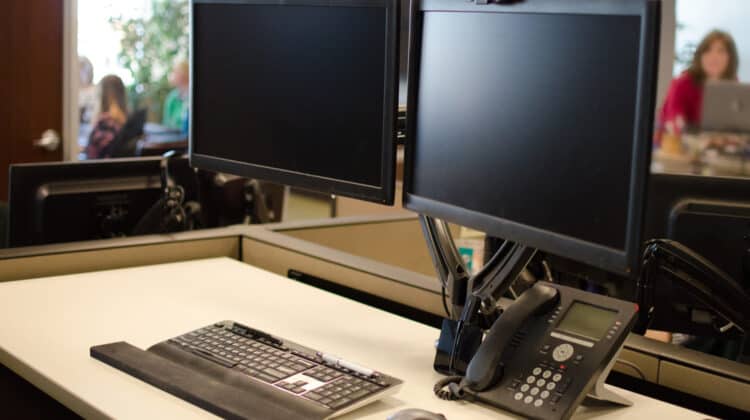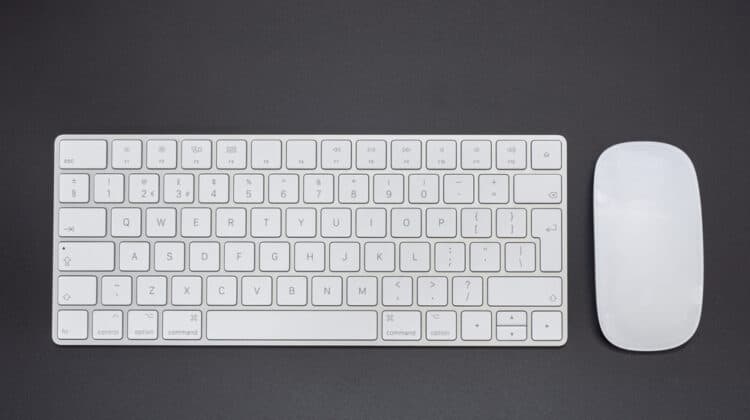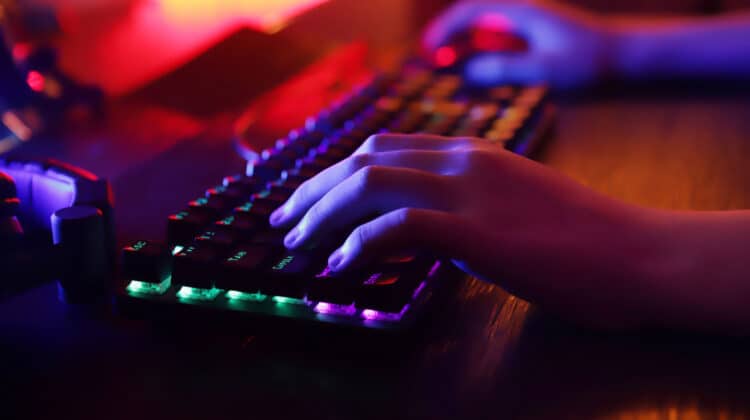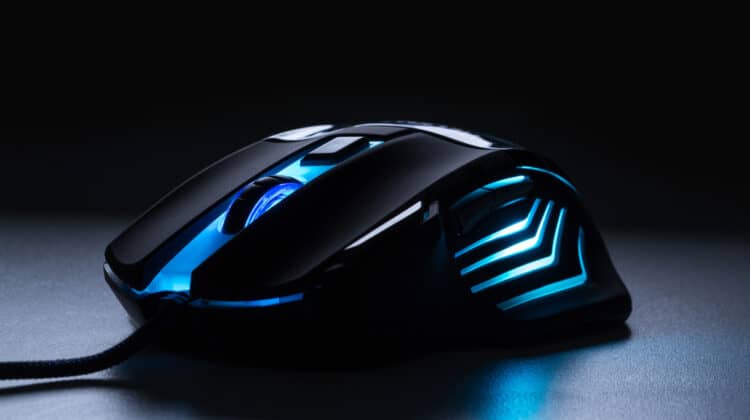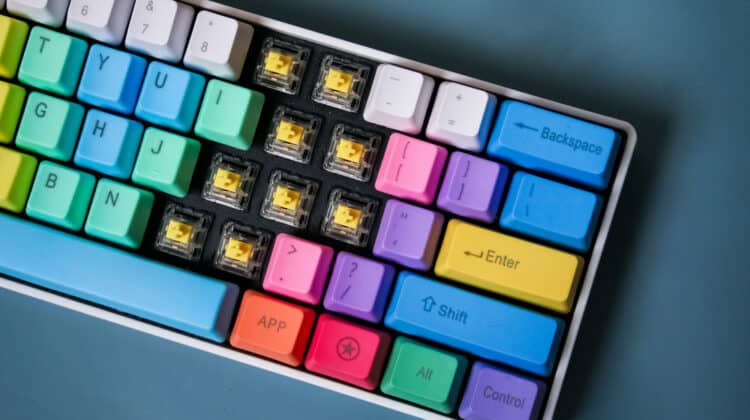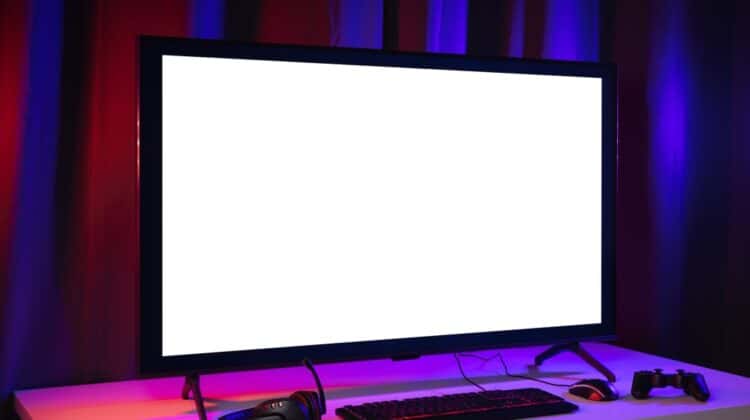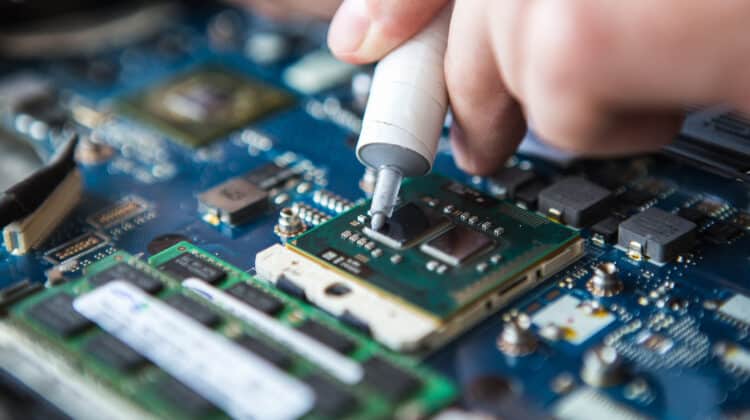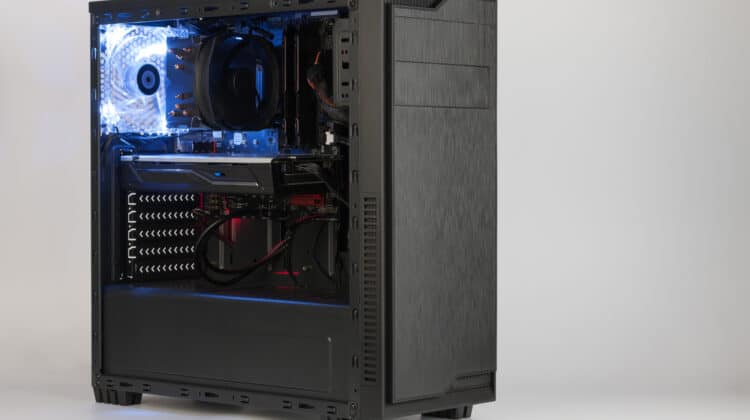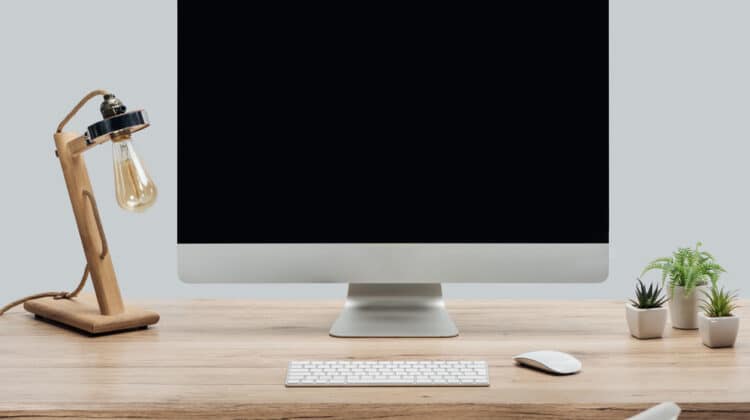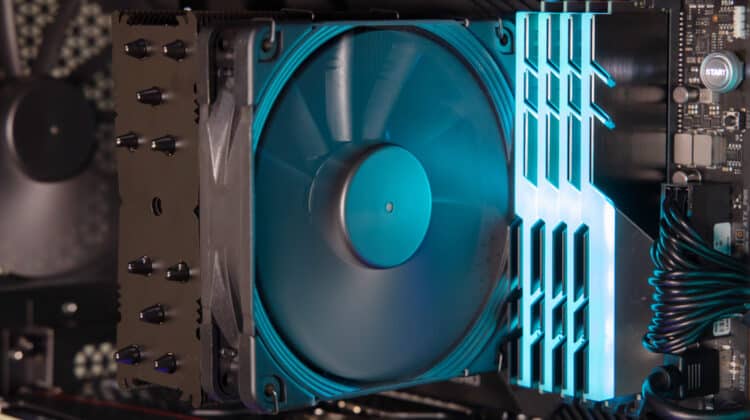
If you want to upgrade your graphics card or simply clean it thoroughly, you will need to remove it from your motherboard.
While it may seem a daunting task, anyone can do it with the right tools in a short time.
Although the process isn’t complicated, you should consider some safety and technical tips to avoid damage to your GPU.
This article shows every step of removing a graphics card in detail.
How To Remove Graphics Card From Motherboard (Step-By-Step)
1. Decide If It’s Integrated Or Dedicated

Removing your graphics card will largely depend on whether it’s integrated or dedicated.
An integrated graphics card is soldered onto the motherboard or built into the CPU chip, so it’s impossible to remove.
If you have a laptop, you can’t remove its graphics card because laptops have integrated graphics cards.
There may be some exceptions, but most modern laptops have integrated GPUs and even CPUs in the form of chips soldered onto the mobo.
Even if you can remove it, the motherboard won’t work.
In such cases, the only thing you can do is uninstall the graphics card’s driver and install an external GPU, which wouldn’t be without limitations.
How To Tell If You Have A Dedicated GPU
If you have a desktop PC, knowing whether you have a dedicated or integrated one is easy.
You can simply open the case and check out the components.
You can find it in one of the expansion slots near the CPU.
Since the CPU and graphics card need to communicate fast, they’re installed as close to each other as possible.
Another way to check your graphics card is to see if there are any stickers on your computer to show your system specs.
If the sticker says your graphics card is Nvidia or AMD, it’s dedicated, while in most cases, an Intel chip is integrated.
Alternatively, you can check your GPU specs in Device Manager under Display adapters.
Then, go to the card manufacturer’s website and check the information.
Finally, you can check the display connections on the back of your case and see where they are.
If your monitor is connected to the case with the outputs on the bottom near the PCI-e slots, your card is a dedicated one, which you can remove.
You have an integrated graphics card if the outputs are above the expansion card near the audio outputs.
2. Get Prepared
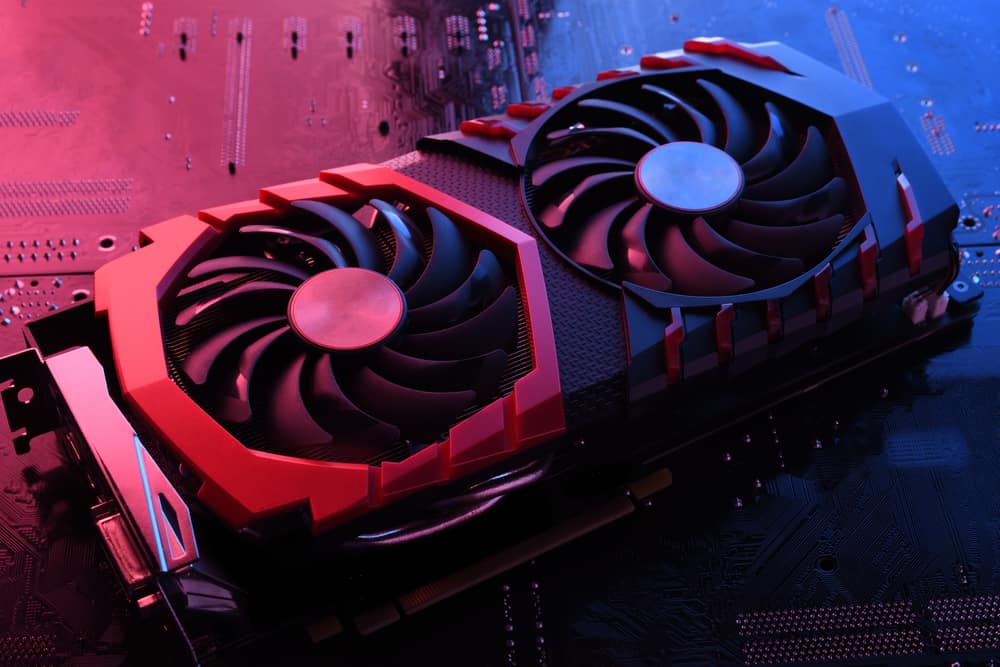
After making sure your graphics card is dedicated, you can prepare to remove it.
Before you can start removing your graphics card, you need to gather some tools and prepare the computer.
The first thing you should do, which is crucial and may affect your graphics card’s performance, is uninstalling the GPU drivers.
By doing so, you’ll prepare your PC software to accept the new hardware.
If you don’t uninstall the drivers, the new graphics card may conflict with the old drivers and negatively affect your display.
Plus, remember to download the new graphics card’s drivers before uninstalling the old one and save them on a USB flash drive, CD, or hard disk to install them after attaching the new card.
Next, you should prepare the tools to simplify your job and avoid reaching out for screwdrivers while removing the card.
You should also have an antistatic wrist strap to prevent any unfortunate mishap while handling the electronic components.
If you touch the components with hands that bear static charge, you may damage them.
You could ground yourself by touching an unpainted metal part of the case, but wearing an antistatic wrist wrap or EDS will be a better way to protect against the static charge.
After preparing all the necessary tools, you can start removing the graphics card.
Take your computer case to a clean and clutter-free space to avoid losing your parts, especially the screws.
3. Unplug All Connections

You’re going to open the computer’s case and touch its sensitive electronics, so it’s essential to make sure nothing is connected to a power outlet.
Turn off the computer and the PSU switch on the back of the case.
Unplug all the power cords and remove the peripherals, including the mouse, USB flash drives, keyboard, monitor, etc. from the case and make sure nothing is attached.
4. Open The Case

Removing the case’s side panel is pretty straightforward as it involves unscrewing or undoing the clamps that hold the side panel in place.
These are the two common ways of opening a PC case.
However, the manufacturer may have used other ways to attach the panel.
Some of them may even need dedicated screwdrivers to unfasten the screws.
In that case, you may need to consult the user manual to avoid damaging the case.
Tip the case on its side to give you a better view of the internal parts.
5. Locate The GPU

As mentioned before, finding the graphics card shouldn’t be challenging because it’s close to the CPU attached to the motherboard through a PCI-e slot.
It’s typically on the lowest part of the case, near the bottom.
Most graphics cards have power supply cables in the form of a six-pin or eight-pin PCI-e cable.
PCI-e cables have a tiny lever underneath that you need to pull down and push out gently until it comes off.
Remove these cables and other dedicated cables that connect the graphics card to other components.
6. Pull Out The Graphics Card

Depending on the graphics card’s model and manufacturer, you may need to remove different locking mechanisms.
Although most GPUs are attached to the motherboard via PCI-e slots, you may also need to unscrew the card from the case.
Inspect all parts of the graphics card and its connections to find where it’s attached to.
Depending on the model, you may have water-cooling hoses or mounting brackets, which you need to remove using different methods based on the types of connections.
Dual graphics cards are connected via an SLI bridge, which you should remove first.
You may need to look under specific plastic panels to find the screws.
After removing these screws, the GPU disconnects from the panel but stays connected to the motherboard.
Support it with your hand to prevent it from falling.
Although it’s unlikely, it can damage the card and PCI-e slot if it falls.
Most expansion slots have a small lever or tab that keeps the card in place.
You need to pull the little lever, usually located on the back, to detach it from the expansion slot.
However, depending on the manufacturer, you may need to pull the lever out instead of pushing it down.
Start wiggling the card while keeping the lever down and pull the card away until it completely comes out of the slot.
Don’t exert any force while pulling the card out or pull it with one swift movement.
Otherwise, you may damage the card.
After removing the card, put it in an antistatic bag and, preferably, a box to keep the card safe.
How To Install A Graphics Card

Whether you want to install a new graphics card or use your previous one after cleaning, it’s fairly straightforward because you just need to reverse the step for removing the GPU.
If you want to install a new graphics card, you should consider your system specs to choose a compatible card.
In that case, the process of installing the new GPU is uncomplicated.
Here’s what to do:
You should place the new GPU inside the PCI-e slot, just like the old one that you removed.
The best slot is the first (X16) one since it’s the one with the most bandwidth among all slots.
It’s also closest to the CPU and can make the communication between the two components faster.
Push the PCI-e slot’s tab to open it and prepare it to accept the new graphics card.
If you’re installing a new GPU for the first time, remove the metal covers on the expansion card holes.
After opening the PCI-e slot, inserting the graphics card inside the holes is easy.
You can’t get it wrong because the metal connectors can only be connected in one direction, and the GPU’s fans should face down.
All you need to do is line up the card’s main connector with the grooves inside the slot.
You should wiggle the card until you get the placement right and the I/O plate slips into its dedicated space.
Push down the graphics card gently until you hear a click showing the card has fit into the slot.
Now, fasten the screws (if any) to connect the graphics card to the expansion slot plates.
Depending on the GPU make and model, you may need to attach the connectors that supply power to the card.
That’s the case with most gaming graphics cards because they need more power.
These are the unique six-pin connectors, and you can’t find them anywhere inside the PC.
It’s easy to connect them.
You should hear a click to make sure they’ve fallen into place.
These cables should be connected to the PSU, and you may need to connect eight or 6+2 connectors depending on the PSU.
Then, close the case by fastening the screws on the side panel.
1. Connect The Monitor And Other Peripherals

After installing the graphics card, it’s time to connect all the other devices, including the monitor and keyboard, and start the computer.
Make sure to plug the monitor cables into the right plugs, which belong to the graphics card, not the motherboard.
These plugs are near the bottom of the case on the expansion cards panel.
Otherwise, you’ll get a black screen because the graphics card won’t be connected to the display.
After connecting all the cables, you can start the computer and boot up the system.
2. Install The Drivers

After booting up the system, your display will work, and you can operate different system parts.
However, installing display adaptors is essential to get the best out of your new GPU.
If you have the drivers already downloaded and saved on the computer or an external storage device, you can simply install them via Device Manager.
Once you open Device Manager, click on Display Adapters to expand it and right-click on your graphics card.
Select Install device and follow the on-screen instructions to complete installing the drivers.
Now, you can use your new graphics card to its fullest potential and start playing games with your computer.
How To Choose The Best Graphics Card For Your System

If you want to upgrade your current graphics card, you need to ensure it’s compatible with system specs and your needs.
For example, if you want the new graphics card for gaming or graphically-intensive tasks, such as editing, you need to make sure it can handle these high-demand tasks.
Here are the essential parameters to consider:
1. Integrated Vs. Dedicated
If you have an integrated GPU, you may wonder whether you can use a dedicated one to improve your PC’s performance.
Generally speaking, you can use a dedicated and integrated GPU in the same system, provided that its specs support it.
Integrated graphics cards have a lower performance than dedicated GPUs because they’re simply chips on the CPU rather than separate cards.
In addition, an integrated GPU doesn’t have its dedicated RAM, unlike discrete GPUs.
As a result, when you perform graphically demanding tasks, your system will slow down because the GPU will occupy a large portion of RAM.
However, you should consider the same factors for buying any dedicated GPU, which we’ll discuss below.
In addition, you should decide if you want to have two graphics cards running in parallel to boost your performance.
Note that not every graphics card supports this feature, and you should look for two identical GPUs that can run parallel to each other and make sure your motherboard supports this setup.
2. Power Supply
Since dedicated graphics cards are power-intensive, they need a dedicated power supply.
You should make sure your computer’s PSU can handle the graphics card’s power demands.
Depending on the GPU, you may need a power output of 300W–600W.
You should also consider the power demands of other components, such as the CPU.
You should add up their power demands and make sure the result is lower than the power supply unit’s maximum output.
3. Monitor’s Specs
No matter how powerful your graphics card is, you can’t use its full potential if your monitor doesn’t support it.
For example, if your monitor has a lower refresh rate than the graphics card, your gameplay is limited to the lower refresh rate.
Conversely, if your monitor has a higher refresh rate than what your graphics card can support, you’ll be stuck with your GPU’s refresh rate.
The same thing goes for resolution.
If you play games at high resolutions and your monitor is 4k, you’ll need a powerful graphics card that supports these specs.
And finally, if you’re going to have multiple displays, your graphics card should support it since not all graphics cards are made so.
4. Interface
If you’re going to upgrade your gaming system by changing your GPU, you need to make sure its interface matches the PC.
A majority of today’s GPUs use PCI-e slots, but they may vary in terms of the number of slots they occupy, including single, double, or triple slots.
You should consider all the components that go into the PCI-e slots and make sure you have enough room for the new graphics card.
5. Size
Not all graphics cards can fit into any PC case.
The reason is that GPUs come in different sizes, as do PC cases.
As a result, you need to make sure the graphics card’s form factor matches the PC case and that it can fit into the case without you having to sacrifice any components.
In addition, there should be enough room inside the case to allow for sufficient airflow.
Otherwise, the system will have trouble cooling down the innards, especially the GPU, which tends to run hot quickly.
6. Connections
As you saw above, the graphics cards have outputs that connect the display to them.
These outputs can be of different types, including HDMI, DVI, VGA, and DisplayPort.
HDMI and DisplayPort are the most modern connection types, and most graphics cards have these two connections
You want to get a graphics card that supports more connections.
This way, you won’t be limited to specific displays, and you can also connect your graphics card to older displays.
NEXT: Do PC Cases Come With Fans? (Explained)
